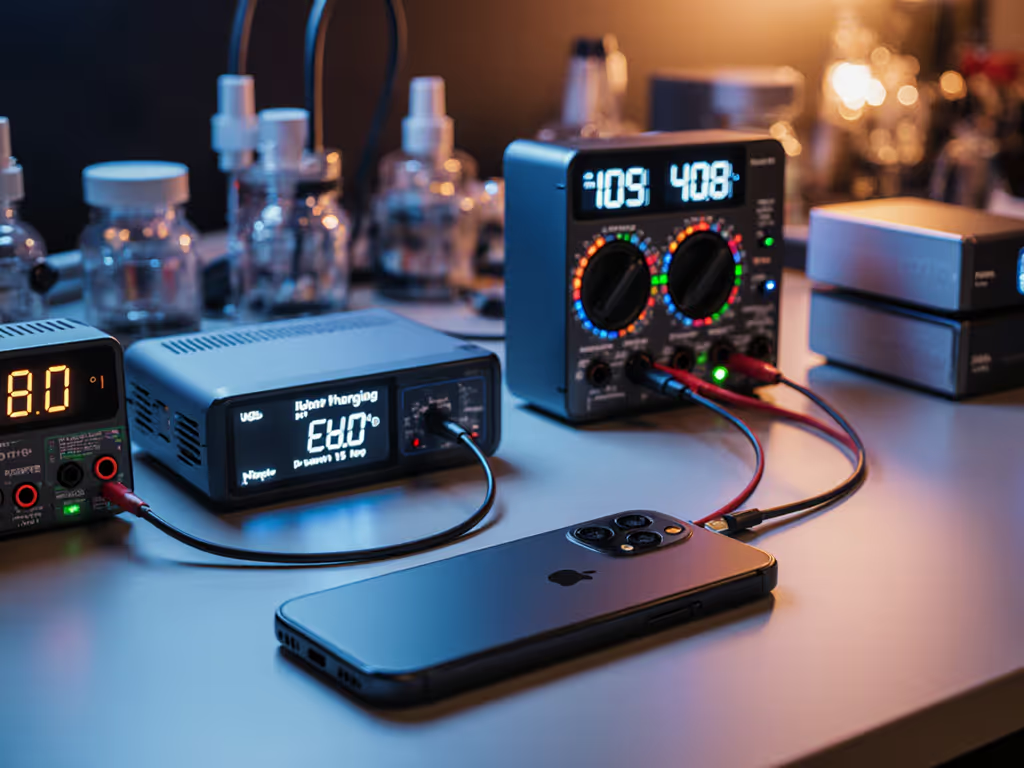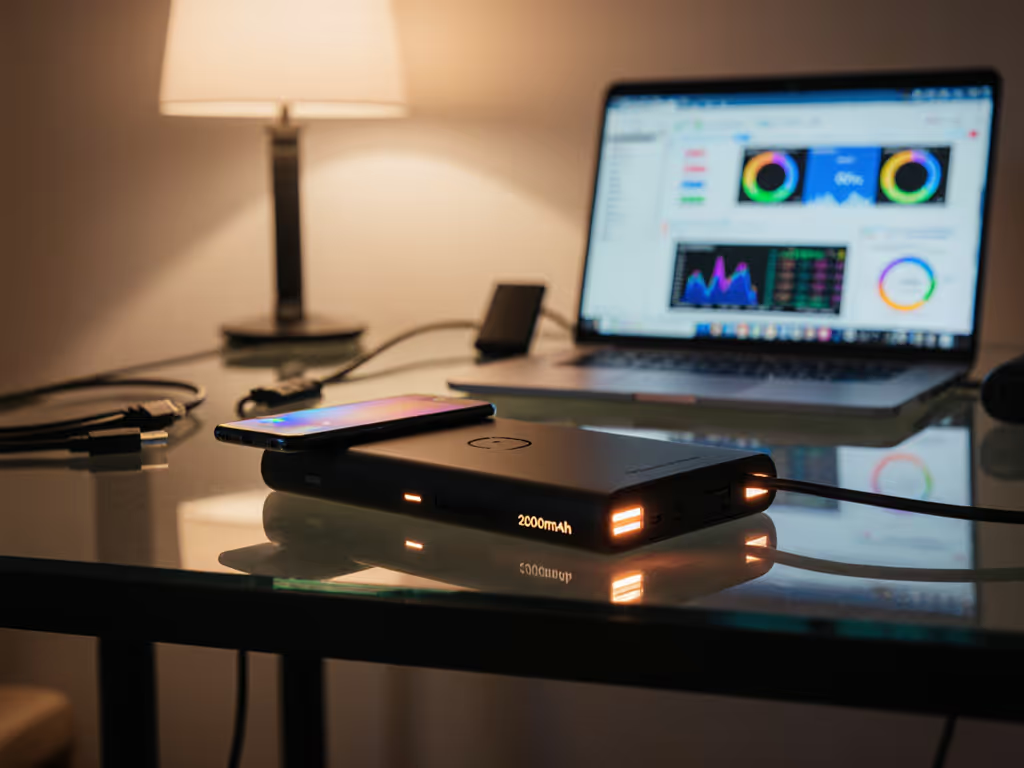
Wireless Power Bank Guide: Qi Efficiency Explained
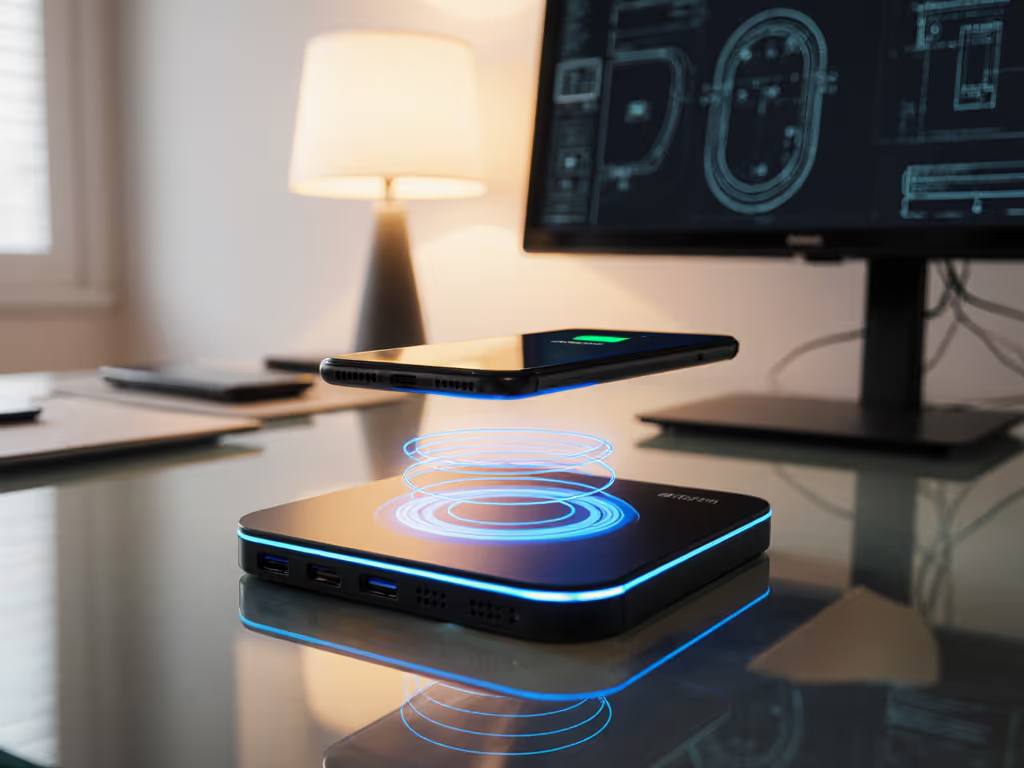
If you've ever experienced your phone charging at a snail's pace from a "high-speed" wireless power bank, you've encountered the hidden complexity of wireless charging. This "magnetic charging" mystery isn't magic, it is physics and protocol negotiation. Understanding the Qi wireless standard's limitations helps you design predictable charging setups rather than gambling with compatibility. Predictable negotiation beats luck.
How Qi Wireless Standard Actually Works
Qi wireless charging operates on electromagnetic induction (two copper coils transferring power across a small air gap). When you place your phone on a wireless power bank, the transmitter coil in the bank creates an alternating electromagnetic field. Your device's receiver coil converts this field back into electricity to charge the battery. This process requires precise alignment and minimal distance between coils.
Unlike cable charging where electrons flow directly through conductors, wireless power transfer involves energy conversion at multiple stages:
- DC power from the bank's battery → AC current in transmitter coil
- Electromagnetic field transmission across air gap
- AC current in receiver coil → DC power for device battery
Each conversion step introduces efficiency losses. Standard Qi charging typically operates at 60-75% efficiency compared to 85-95% for wired USB-C PD charging. This means for every 10Wh of energy your power bank holds, your phone might only receive 6-7.5Wh through wireless charging.
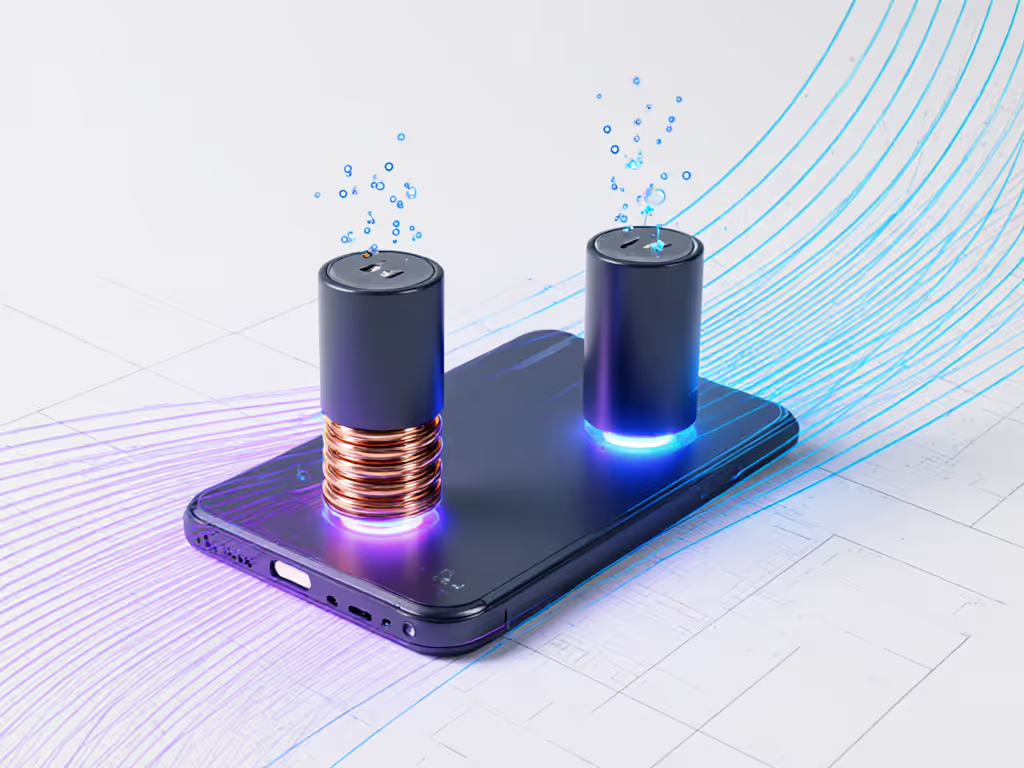
Charging Distance Limitations: Why Your Phone Must Sit Perfectly
Qi technology demands proximity (typically 4-8mm between coils) for efficient power transfer. As distance increases, efficiency drops exponentially due to the inverse square law of magnetic fields. Many users unknowingly charge at reduced rates because:
- Phone cases thicker than 3mm (especially those with metal elements)
- Misalignment between device and charging coil
- Foreign objects between phone and power bank
- Environmental interference from magnets or electronic devices
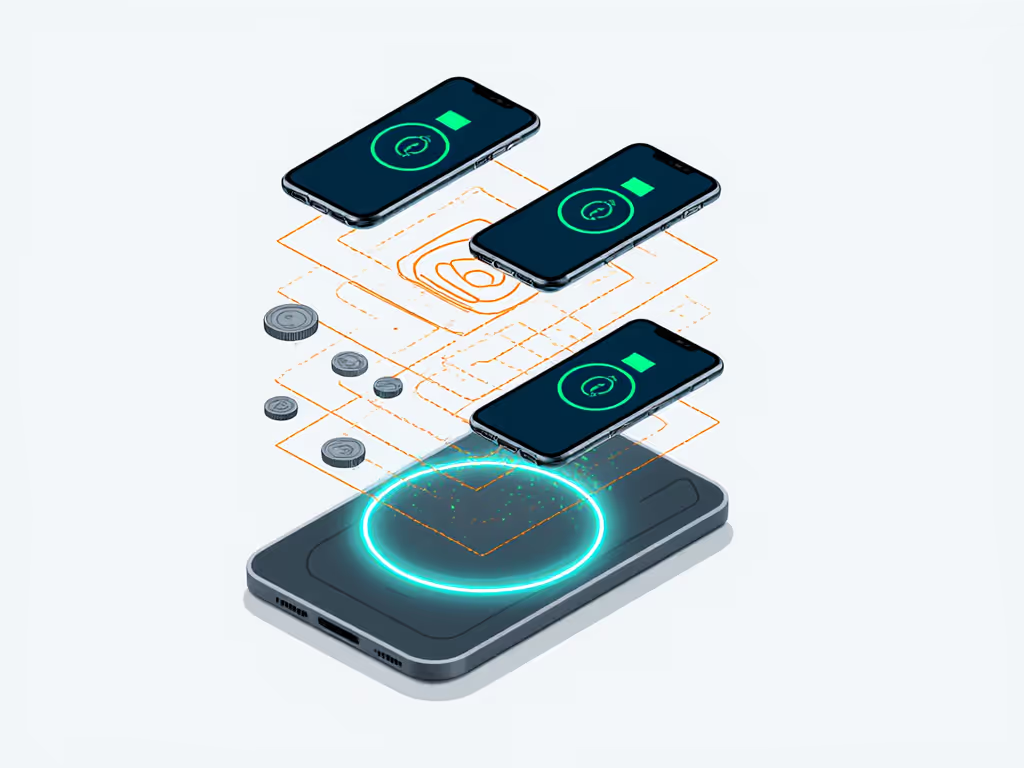
I recently helped a friend troubleshoot why his new phone only charged at 5W from a "15W" wireless power bank. His "fast charging" claim was misleading because his thick wallet-case created a 10mm gap, well beyond the optimal range. Removing the case immediately triggered proper 15W charging. The "fast" specification assumed perfect coil alignment and minimal distance, conditions rarely met in real-world use.
Wireless vs Cable Efficiency: Quantifying the Difference
| Charging Method | Input to Power Bank | Output to Device | Effective Efficiency |
|---|---|---|---|
| Wired USB-C PD | 100Wh | 90Wh | 90% |
| Qi Wireless | 100Wh | 65Wh | 65% |
The wireless vs cable efficiency gap becomes critical for travelers with limited power bank capacity. For a reality check on delivered capacity versus marketing claims in wireless models, see our wireless true capacity comparison. That 25% difference means your 20,000mAh bank might deliver just 13,000mAh wirelessly versus 18,000mAh via cable. For a smartphone with a 4,000mAh battery, that's 3.25 full charges wirelessly versus 4.5 charges with a cable.
Key physics factors affecting wireless efficiency:
- Coil alignment (perfect alignment: 75% efficiency, 10mm offset: 45%)
- Temperature (heat increases resistance in coils)
- Foreign object detection protocols (safety systems reduce power when detecting metal)
- Frequency limitations of Qi standard (110-205kHz range)
Thinking of the cable as a component rather than an accessory reveals why many "fast wireless" claims feel deceptive, because they're measuring output from the bank, not what actually reaches your device.
Magnetic Charging Explained: MagSafe and Beyond
Apple's MagSafe system builds upon the Qi wireless standard but adds precise magnetic alignment and higher power delivery (up to 15W versus Qi's standard 7.5W). A custom MagSafe power bank uses ring magnets to perfectly align the transmitter and receiver coils, maintaining optimal distance and orientation.
The difference isn't just magnets, it is protocol negotiation. MagSafe power banks include authentication chips that communicate with iPhone hardware to enable higher power profiles. Non-MagSafe Qi power banks max out at 7.5W for iPhones unless they've been certified through Apple's MFi program.
Other manufacturers have created similar magnetic systems (like Samsung's Wireless PowerShare), but true MagSafe compatibility requires specific power delivery protocols beyond basic Qi certification. This is why many "MagSafe-compatible" power banks underperform, because they implement the magnets but not the full communication protocol.
Maximizing Your Wireless Power Bank Performance
To get the most from your wireless power bank, consider these protocol-aware strategies:
1. Evaluate Actual Delivered Capacity
Check if the manufacturer specifies "delivered capacity" rather than "rated capacity." Good manufacturers provide both wireless and wired efficiency metrics. Look for:
- Wireless efficiency ratings (ideally 65%+)
- Clear differentiation between battery capacity and usable output
- Device-specific charging curves (e.g., "Delivers 14,000mAh to iPhone 15")
2. Control Environmental Factors
- Remove thick cases during charging (≤3mm ideal)
- Place power bank on stable surface to maintain alignment
- Avoid charging in extreme temperatures (0-35°C optimal)
- Keep metal objects away from charging surface
3. Understand Power Profile Negotiation
Wireless power banks and devices communicate before delivering maximum power. This handshake determines the safe operating level. If your device doesn't reach advertised speeds, check:
- Does your power bank support Extended Power Profile (EPP) for 15W charging?
- Is your device certified for EPP charging?
- Does the power bank firmware properly identify your device?
4. Strategic Charging Workflow
For critical situations, I always carry a single USB-C cable (even with a wireless power bank). When battery is critically low, I use wired charging to reach 20-30% quickly, then switch to wireless for convenience. Predictable negotiation beats luck when you understand when to leverage each method's strengths.
The Bottom Line
Wireless power banks offer undeniable convenience but operate within strict physical limitations. The Qi wireless standard creates predictable charging distance limitations that no marketing can overcome. When selecting a wireless power bank, prioritize units that transparently disclose real-world efficiency metrics rather than maximum theoretical output.
For travelers needing maximum efficiency, consider carrying both wireless convenience and wired reliability. Understanding where wireless power loses efficiency helps you deploy it strategically (like using it during coffee breaks while reserving wired charging for critical battery recovery).
The cable is a component, not an accessory. When you treat wireless charging as part of a complete system rather than a standalone feature, you gain control over what actually reaches your device. For deeper exploration of protocol negotiation between devices and power banks, check our companion guide to USB-C cables and e-marker requirements.
Related Articles

